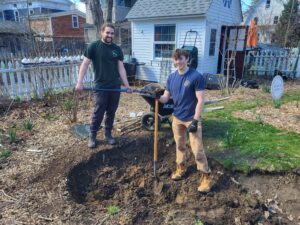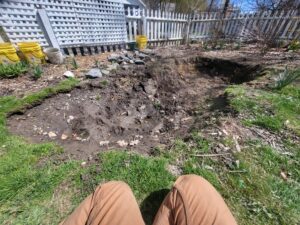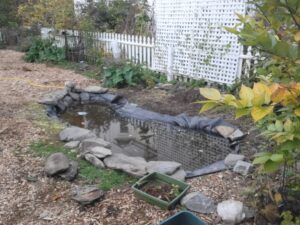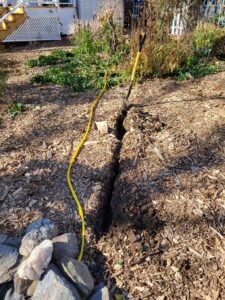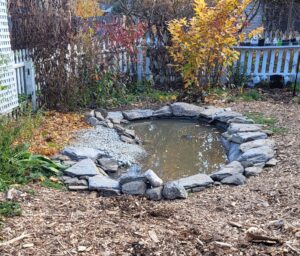I bet you already knew that a clean and dependable water source is a critical part of wildlife habitats. The National Wildlife Federation states that: “When you create a space that provides four essential habitat elements – food, water, cover, and places to raise young – (along with) practicing sustainable gardening, the National Wildlife Federation will recognize (the space) as a Certified Wildlife Habitat®. An ideal Certified Wildlife Habitat® provides food, water, cover, and places to raise young for wildlife with a minimum goal of 70% native plants that provide multi-season bloom and are free of neonicotinoids and other pesticides or herbicides.”
Water For Wildlife
The most basic way of meeting the water requirement in a wildlife habitat that is located within an urban yarden (yard + garden) is to have a bird bath. But all bird baths are problematic. Birds need a lip to perch on to access the water, bees and butterflies need shallow areas for their very small bodies. Without diligent attention, bird baths go dry. If forgotten this time of year, they crack during our winter weather. Worse yet, the wrong placement creates a particularly deadly bird-hunting location for neighborhood cats. And lastly, if not diligently cleaned weekly, they can spread disease and parasites.
It has taken many tries and fails to find just the right style, material and height of a bird bath for our demonstration gardens. A tiny solar fountain keeps the water moving to prevent mosquito larvae but still, it needs to be emptied and wiped out weekly as well as to be regularly filled with rainwater. It will soon need to be emptied and put away for the season as the first hard frosts loom. Goodness.
Graduating to a Wildlife Pond
Now all of this said, it was pretty magical to watch a robin take a bath in our birdbath this summer. It has been a wonder to see various butterflies at the top of the shallow edges and bees perch on the sloping stones to get a drink on blazing days. But after several years of observation to find just the right location here, taking into consideration our site’s slopes and sun exposures, it is finally time to also provide for the needs of important amphibian species as well. The USGS explains the value of amphibians: “They eat insect pests which are a benefit to agriculture and help control mosquitos which benefits human health.” They also explain that “Amphibians are an important part of the food chain, providing food resources for numerous animals from snakes to raptors. …and many people enjoy listening for frogs on a summer’s night as they are greeted by a chorus of sounds coming from multiple species’ frog calls.”
Now, I’m talking about a tiny pond, one that fits into an urban, residential backyard. Even a small, shallow pond, hopefully with one deep spot, is an incredibly important refuge and breeding location for salamanders, toads, wood and tree frogs. These types of wildlife ponds function best, nearly covered with aquatic plants, ironically, to keep algae populations under control and the water itself cool. They do not have fancy goldfish. This is because of the fact that fish eat the tiny tadpoles which would have become the amphibians we are trying to foster. These ponds are calm, lovely spaces. And with several tall sticks, they can create a dramatic hunting ground for the amazingly proficient dragonflies that we like to observe.
So with guidance from ‘How to Build a Backyard Wildlife Pond’ by Theresa Berrie of @ourtinyhomestead, recommended by the inimitable Nancy Larson, author of The Humane Gardener and Wildscape, as well as a gracious donation of an HDPE liner by Tyler Magoon of Monarch Roofing in Swanzey, a wildlife pond has been created on the near east side of Keene, in the back Healthy Home Habitats’ demonstration garden! Watch for FB and IG postings @healthyhomehabitats as we proceed through these next seasons on this, the last of our four wildlife habitat components for our yarden to become a inclusive sanctuary for the tinier and tremendously important members of wildlife our wildlife community.
RESOURCES:
USGS: https://tinyurl.com/mnmewf7y
NWF: https://tinyurl.com/5d33fe7m
As published in the 09-15-24 Monadnock Shopper News: https://shoppernews.com/shopper-news/oct-09-15-2024/


